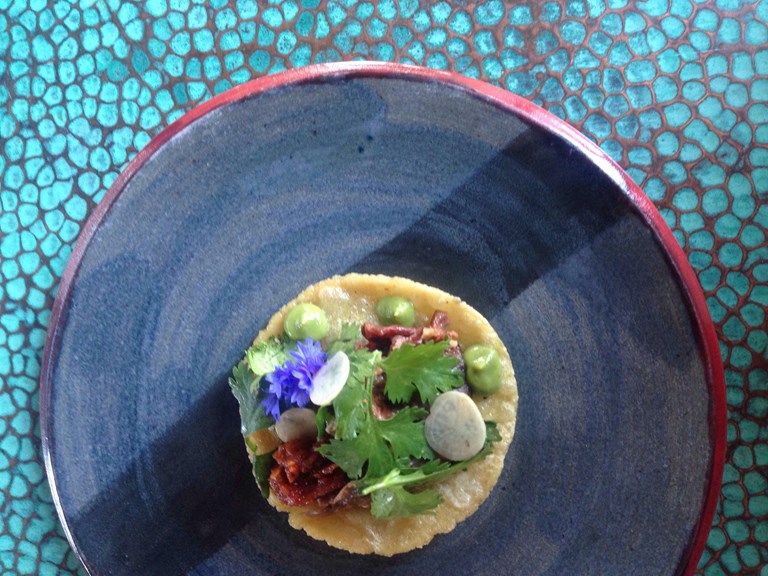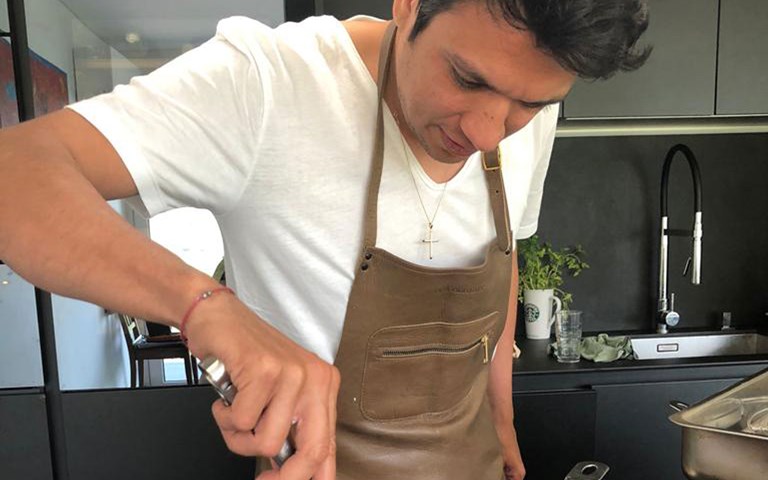
In the name of maize
There is a cuisine that is traditionally gluten free, and that is Mexican. The reason is simple: in the preparation of the typical recipes of this South American country, they use a cereal that is almost exclusively deficient in gluten: maize (otherwise known as corn, sweetcorn, corn on the cob). This is also why Grono’s B Atelièr Bistrôt decided to ask for advice on possible gluten-free restaurant offerings from chef Baldolomero Lopez. Originally from Mexico, Lopez has international experience, and is currently in charge of food service at the Mauri Concept restaurant in Lugano. Here is our interview with him.

Chef, have you always had a gluten-free cuisine in Mexico?
“Gluten is present in a few cereals, but not in maize. In Mexico, we use maize to make tortillas, which are the basis for most of our typical dishes. A gluten-free cuisine is quite normal for us Mexicans, a daily reality and legacy from our culinary tradition”.
You are the proof that even a gluten-free cuisine can be delicious and flavorsome.
“Yes, for example tacos are served with meat, chicken and vegetables. In general, we use a lot of vegetables like sweet potato, beans and lentils. And then of course we add spices, onions, tomatoes, bell peppers, and hot chili pepper, but also avocado, almonds and coconut”.
How do you make tortillas?
“First and foremost, you need to use cornmeal maize flour. Nowadays they also make them out of wheat flour, but besides not being suitable for celiacs, it’s not in our tradition either”.
So do you use the same flour that we in Europe use to make polenta?
“No, absolutely not. The flour we use is Masa Harina, a traditional maize flour that undergoes a special treatment called nixtamalization”.
What’s the process?
“The maize is cooked in a solution of slaked lime (calcium hydroxide), left to rest, washed, and a light-colored dough is obtained, which is then dried and ground into Masa Harina (editor’s note: this process allows the vitamin niacin to be unlocked, that normally wouldn’t be assimilated by the body)”.
So that’s why in our valleys where the staple food was polenta, the disease pellagra was rife - you on the other hand have never been affected by this as you have been eating maize for thousands of years. What type of dishes do you make with tortillas?
“The most well-known ones are fajitas, burritos, tacos and nachos. We also have enchiladas, tlayudas and quesadillas.”
What’s the difference?
“Fajitas are small bite-sized pieces of meat, chicken or beef, or both, with pepper, onion, chili and spices, which can be served with tortillas or rice or beans (also gluten-free). Burrito is a stuffed meat tortilla, but can also be filled with other ingredients, folded, and sealed. Tacos are tortillas folded into a U, which in Europe are known as Tex-Mex, but in Mexico are not fried. Enchiladas are stuffed tortillas, rolled and served with salsa (chili sauce). Quesadillas are tortillas with a cheese-based filling. Tlayudas are tortillas covered in cheese, meat, bacon, beans, avocado, and vegetables. Nachos are instead well-known in Europe as the wedges of fried tortillas that we normally dip into guacamole sauce or cover with melted cheese and salsa”.
And for those celiacs who don’t want to give up bread?
“I would recommend baking an oatmeal loaf. Oats also contain a lot of fiber and help to reduce cholesterol levels. As well as water and oatmeal, you need to use bicarbonate instead of yeast, which can also be added to yogurt. The raising agent used for baking is not suitable for celiacs because it is derived from wheat flour and therefore contains gluten”.
Have you noticed restaurants paying more attention to celiacs’ needs?
“There are definitely more restaurants these days that offer celiac-friendly menus or dishes. And overall, in the industry there is more care taken in preparing food. However, there is still plenty of room for improvement, especially when it comes to pasta – not all restaurants offer a gluten-free alternative”.
Soundtrack


